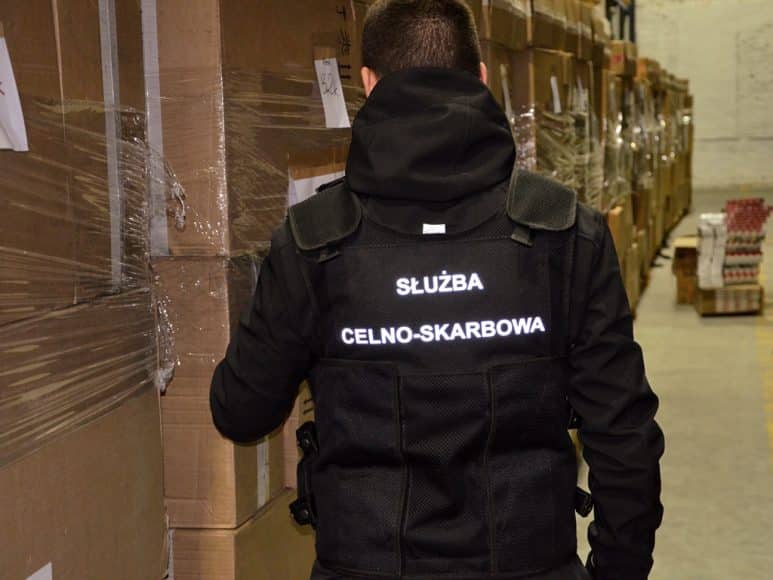- Counterfeit goods cost the garment, cosmetics and toy industry 16 billion euros and nearly 200,000 jobs annually in Europe.
- Due to the counterfeiting of products in the clothing, cosmetic, and toy sectors, more than 18,000 jobs are lost annually in Poland.
- The clothing industry suffers the greatest losses from counterfeit goods, losing nearly 12 billion euros of annual revenue (5.2% of sales).
- The cosmetics sector and toy industry also see significantly lower sales due to counterfeit products – they record losses of 3 billion euros (4.8% of sales) and one billion euros (8.7% of sales) respectively.
- Counterfeit goods mean fewer jobs: 160,000 fewer in the clothing sector, 32,000 fewer in the cosmetic sector, and 3,600 fewer in the toy sector.
Clothes, shoes, cosmetics and toys – these items make the gift list of many consumers throughout the holiday season, and are also of interest now during the sales period. Consumer goods generate hundreds of billions of euros annually in the European Union, but they are often counterfeited, which can be associated with serious health and safety problems for consumers.
For manufacturers conducting legitimate business in the mentioned sectors, counterfeit goods amount to a loss of as much as 16 billion euros of annual sales, and consequently the elimination of nearly 200,000 jobs for the whole economy. These findings come from a study published today by the European Union Intellectual Property Office (EUIPO) in which the economic implications of counterfeiting goods for the clothing, cosmetics and toy sectors were analysed.
HEAVILY IMPACTED HIDDEN COST
In the EUIPO study, based on data from 2018-2021, it was found that yearly losses in the sales of legal clothing and footwear, cosmetics and toys amounted to 12 billion euros, 3 billion euros and 1 billion euros respectively.
In total, these sectors in Germany, France, Italy, Spain and Austria suffered the greatest losses, with the sales of original goods decreasing by nearly 8 billion euros.
However, individual countries are affected by the negative effects of counterfeiting to varying degrees, and there are significant differences between the types of goods.
The toy sector is the most affected by counterfeits; the report shows that throughout the Union, this sector suffers losses of 8.7%, and in more than half of EU countries, this percentage is in double digits. Five countries where toy sales are most vulnerable to counterfeits are Malta (16.2%), Croatia (14.2%), Cyprus (14.1%), Hungary (13.7%) and Slovenia (13.1%). Germany, which lost 334 million in sales, is the country most affected by toy counterfeits. These losses account for one third of all lost sales in the EU in the toy sector.
The clothing and footwear industry, the largest sector analysed in the study in terms of sales, suffers losses of about 5% in Europe, with the highest recorded losses being in Cyprus (10.7%), Ireland (10.2%), Luxembourg (9.2%), Lithuania (9.1%) and Estonia (8.7%).
Among the three studied sectors, the cosmetics sector suffered the least losses due to counterfeit goods. In the EUIPO report, it was found that the losses of legitimately operating cosmetics manufacturers are slightly less than 5% of total EU sales. The French cosmetics industry suffered the most in absolute terms, recording sales losses of 800 million euros per year. The report recorded the highest losses in Bulgaria (8.7%), Cyprus (7.9%), Romania (7.9%), Portugal (7.7%) and Hungary (7.6%).
In addition to monetary losses and the impact on the labour market, the report noted that counterfeit products, especially in the cosmetics and toy sectors, pose a serious threat to consumer health and safety. As per the assessment of crime threats against intellectual property conducted by EUIPO in 2022, such potentially harmful products constitute 15% of counterfeit items intercepted at EU external borders.
COUNTERFEIT GOODS AND JOBS
The study conducted by EUIPO of sales trends in these three sectors highlights the scale of the impact of counterfeit goods on lawfully operating companies, which are hit by a drop in sales, the direct result of which is a reduction in the number of people employed.
According to the report, Germany, as the largest consumer market in the EU, loses nearly 40,000 jobs. Losses in clothing, cosmetics and toy sectors are also suffered by other large countries, including Italy (24,241), Poland (18,244), Spain (15,044) and France (14,427).
João Negrão, Executive Director of EUIPO, stated:
Counterfeit goods have real costs – for consumers, for brands and for our economies. This latest study shows the very real costs in terms of lost revenue and jobs in the EU. The findings on counterfeit goods highlight the valuable work EUIPO carries out through the observatory, and the important cooperation with Europol, the European Anti-Fraud Office (OLAF) and the European Commission in the identification and elimination of counterfeit goods in the EU.
UNDERLYING FACTORS
One key variable is the awareness of EU consumers and perception of counterfeit goods. According to a public opinion survey on intellectual property conducted by EUIPO in June 2023, one-third of Europeans believe that purchasing counterfeits is acceptable if the price of the original product is too high. This percentage increases to 50% among young people. The survey took into account the percentage of people in each country who admit to purchasing counterfeit goods regardless of whether they were misled or knowingly purchased a counterfeit item.
The study also relies on data from a joint EUIPO and Europol report focusing on multi-crime, which demonstrated that crimes related to intellectual property are linked to other serious crimes. It also utilized the annual report jointly published with the European Commission’s Directorate-General for Taxation and Customs Union, which contains data on border and internal detentions of counterfeit goods.
